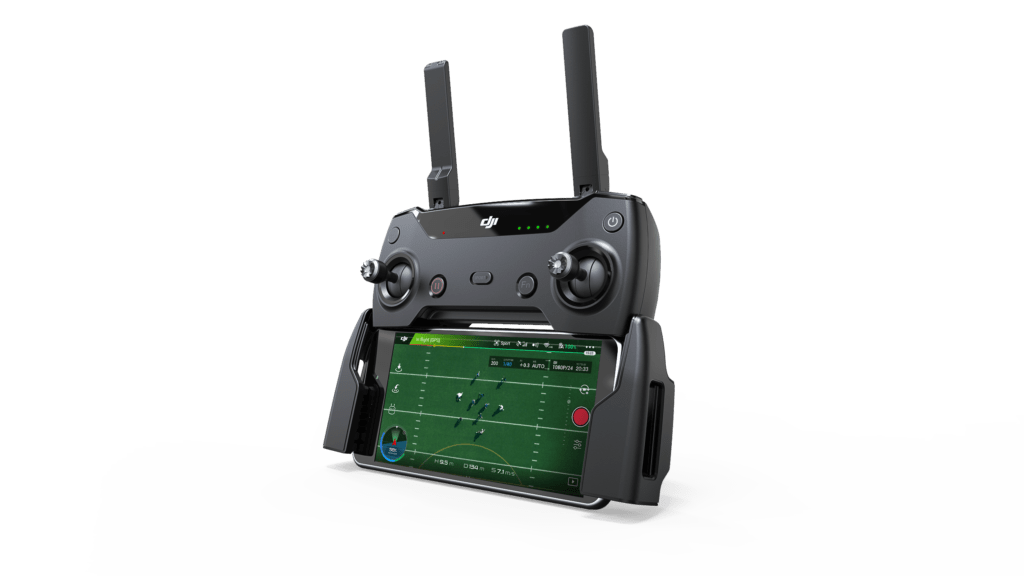Description


Introduction
DJI manufacturing company often pleases customers with the release of various quadrocopter models for every taste. Among them, you can find large devices for shooting high-quality 4K-video and smart small quadrics. The Spark selfie drone model cannot assign to either the first or second of these categories. The quadcopter is equipped with brushless motors, allowing wind resistance at speeds up to 50 km/h (in Sport mode). Still, it is notable for its moderate compactness, ease of operation, and affordable price.


Design & Features
DJI makes some of the most durable, well-designed uncrewed aerial vehicles – Spark is no exception. It is one of the company’s strongest drones. With small brackets, no legs, with a hidden camera. In general, DJI Spark is one of the hardiest quadrocopters, and the build quality is at the highest level. There is one design element that helps Spark stand out from the crowd. Unlike another drone, this little rascal comes in rainbow colors. The replaceable top plate is available in white, red, yellow, blue, and green, and other colors/patterns are just around the corner. Not an innovative addition, but it’s nice to have several color options.
In addition to the small and ultraportable design, DJI Spark Drone has many flight modes. In addition to the standard features, the quadrocopter equipped with a handful of new modes, including Rocket, Dronie, Circle, and Helix. Spark owns the basics of gesture recognition that let you control it without a smartphone or controller. Another great addition is the collision avoidance system. The function of detecting and avoiding objects during the flight, as a rule, is found only in large devices, DJI went ahead and built an option in Spark. Of course, it doesn’t work as it does on Phantom 4 or Mavic Pro, but it serves the purpose of helping to avoid accidents.


Camera
The DJI Spark Drone camera has twelve megapixels 1/2.3 CMOS with a viewing angle of 81.9°. The suspension installed mechanical biaxial. The characteristics allow the quadrocopter to take not only landscapes but also make excellent selfies on their background. The DJI Spark quadrocopter camera is capable of shooting video in Full HD, but only at thirty frames per second (24 Mbps bitrate).


Flight Controller
DJI Spark Drone can control in three ways:
1.) Gestures (at a distance of no more than ten steps)
2.) From a smartphone (at a distance of up to one hundred meters)
3.) To control equipment paired with a phone/tablet (distance up to two kilometers)


Software & Functionality
Spark quadrocopter control from a smartphone done through the DJI GO4 application. The drone has a FlightAutonomy system, consisting of the primary camera, a VPS, a 3D sensor system, a GPS/GLONASS satellite, and twenty-four nuclear processors. This system provides the quadrocopter with the ability to perform accurate flight both indoors and outdoors. The quadcopter makes unique the presence of a wide range of intelligent modes. In addition to the standard Tripod, TapFly, and Active Track, DJI Spark also provides other useful modes that allow you to create beautiful pictures without any special piloting skills. Overview of operating modes:
1.) If you want the captured video material to be smooth, or if you’re going to shoot indoors, then Tripod is optimal. It controls as soft as possible, without unnecessary jerking.
2.) TapFly will be useful for those who plan to shoot on the move.
3.) Active Track allows the quadrocopter to determine the location for the highest quality frame automatically.
4.) A QuickShot mode is also provided presets for shooting film effects are available in it. To work, you need to indicate which structure you plan to make, and the drone starts shooting.
The following presets are available:
1.) Rocket – vertical take-off, with the camera pointing down.
2.) Dronie – the quadrocopter flies back and up from the user, the camera at this time monitors the starting point.
3.) Circle – DJI Spark operates around a given point and gives a panorama of what is happening around (at the same height).
4.) Helix – take-off along a spiral path around a given position (with climb).


Battery & Charging
The DJI Spark mini-drone equipped with a 1480 mAh lithium-polymer smart battery; the maximum battery life is about sixteen minutes. On average, it takes about 45-50 minutes to recharge. There are three ways to charge your DJI Spark battery:
1.) Using a USB cable (about 80 minutes)
2.) Using a charger for simultaneously recharging three accumulators (one – 52 minutes, two – 55 minutes, three – 85.2 minutes)
3.) At the Charging box dock









Reviews
There are no reviews yet.